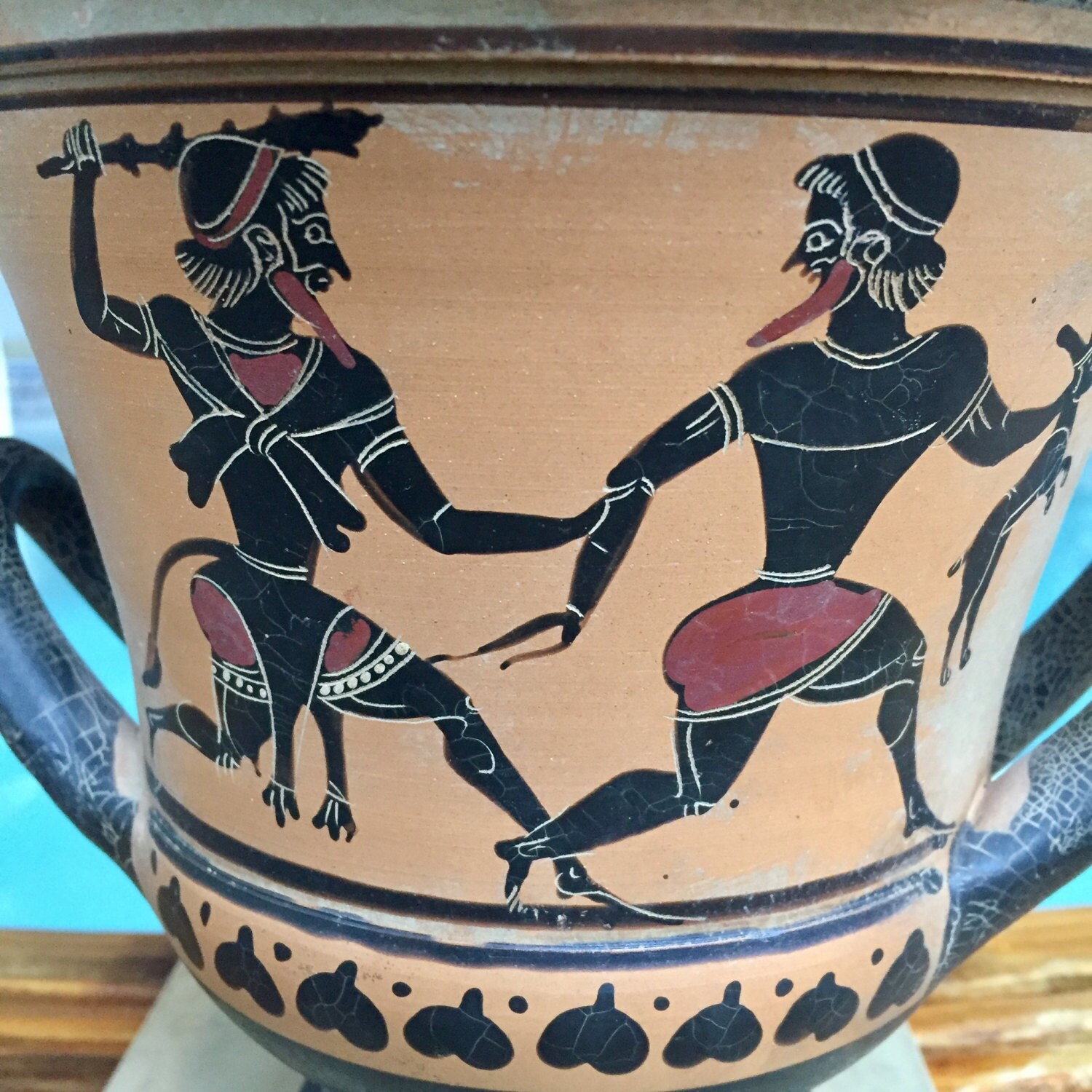
For metal vessels, as in some ceramic, these were made separately. The elaborately profiled foot is intended to be understood as including a stand. Etruscan (Faliscan) Attributed to Painter of Civita Castellana 43969.

The reverse depicts three revelers: the users, as it were, of this krater. Red-figure calyx krater with Bellerophon killing the Chimaera, ca. Asteas was, together with his colleague Python, the pre-eminent vase-painter in early fourth-century Paestum. Wall painting, now lost, is likely to have been the inspiration. At right, Triton brandishes a helmsman's oar.Įxceptional on this vase are the shading on the sun (Helios) and bull. Below at left, is a local touch-Skylla, who lived in the Straits of Messina between Italy and Sicily. Eros and Aphrodite witness what they have set in motion. Then comes the messenger god, Hermes, with herald's staff (kerykeion). They recall the marine escort accorded to Poseidon in the Iliad: "and about him the sea beasts came up from their deep places and played in his path, and acknowledged their master, and the sea stood apart before him, rejoicing." Around the bull dance the denizens of the deep. Europa, apparently unperturbed and finely dressed, adjusts her veil in a bridal gesture. It is the sea voyage between Tyre and Crete that the artist illustrates.

There she bore to Zeus a number of sons, most famously Minos, king of Crete. He disguised himself in the form of a bull (or, as some versions relate, sent a bull), who attracted her attention and managed to carry her off across the sea to Crete.

Overall the imagery, far from providing straightforward depictions of contemporary performances, tends to use rituals and narratives distinctive of dithyramb as vehicles for playing out notions of collective festivity, an aspect of crucial interest within the sympotic viewing context of the vessels.Europa, daughter of Agenor, king of Tyre, was picking flowers in a meadow one spring morning when she was noticed by Zeus. Contemporary polemics of literary/musical discourse are largely absent, as can be seen in depictions of Marsyas and other mythical musicians, where the vase-painters rather stress the prestigious nature of these great performances of the past, while generally avoiding allusions to their violent or problematic aspects. Thus, the thiasos of Dionysos is repeatedly envisaged as a cyclical chorus satyrs and maenads can act as personifications of dithyramb and other performative genres, thereby unfolding outright allegories of ritual practice scenes of dithyrambic victory celebrations focus on the joyful character of the occasion. Within the imagery of late-fifth-century painted pottery from Athens, a whole range of visual contexts can be made out, where dithyramb is referred to, if in a distinctively oblique manner.


 0 kommentar(er)
0 kommentar(er)
